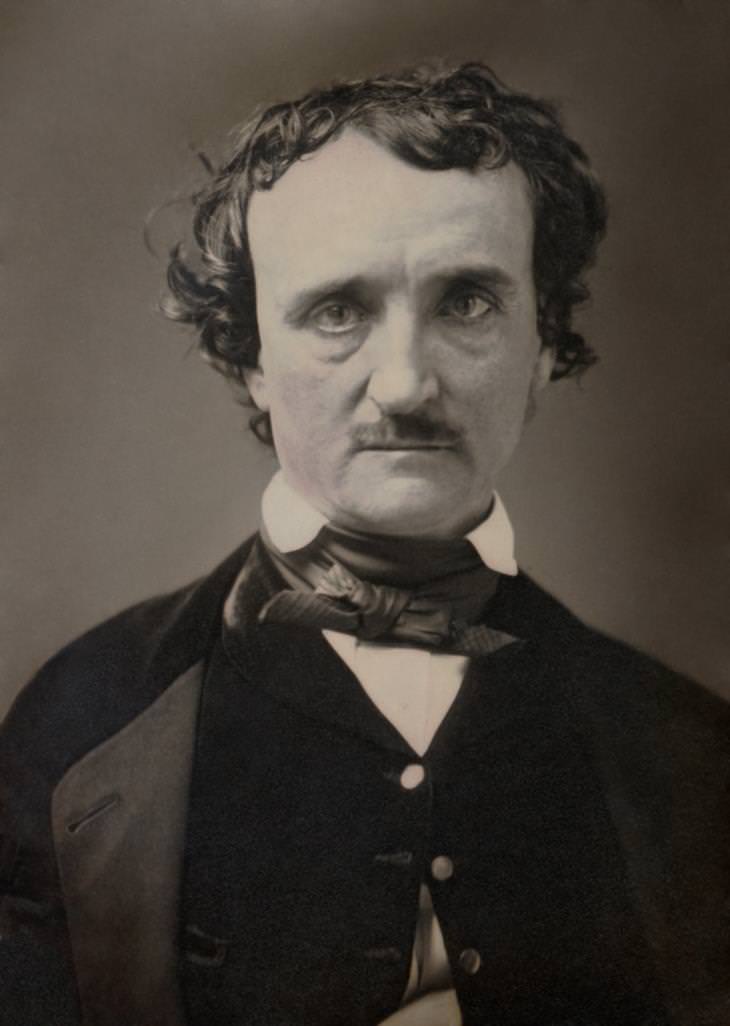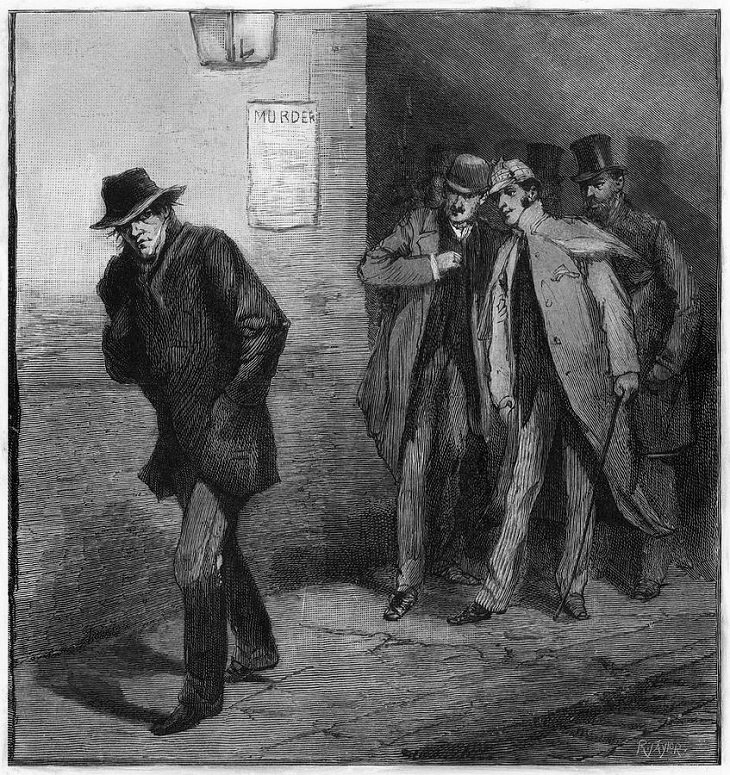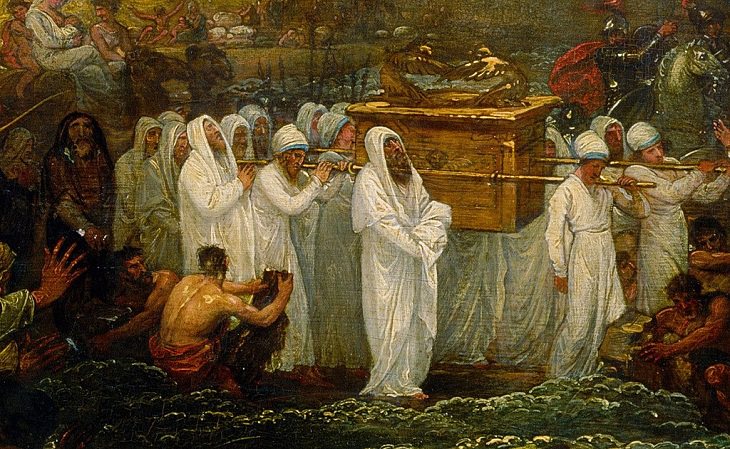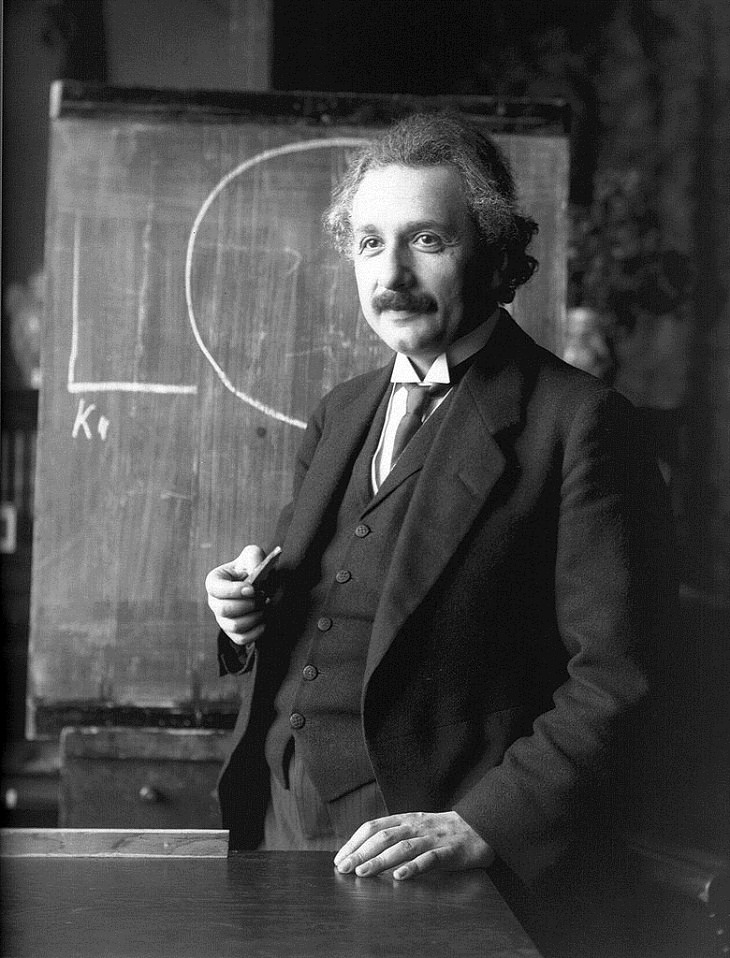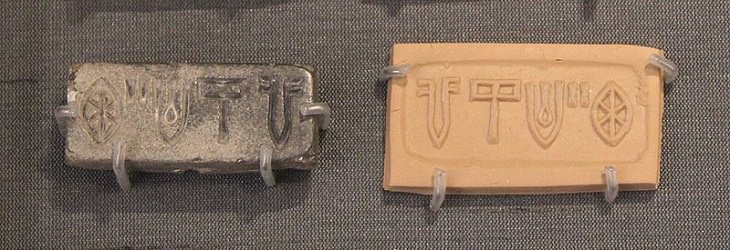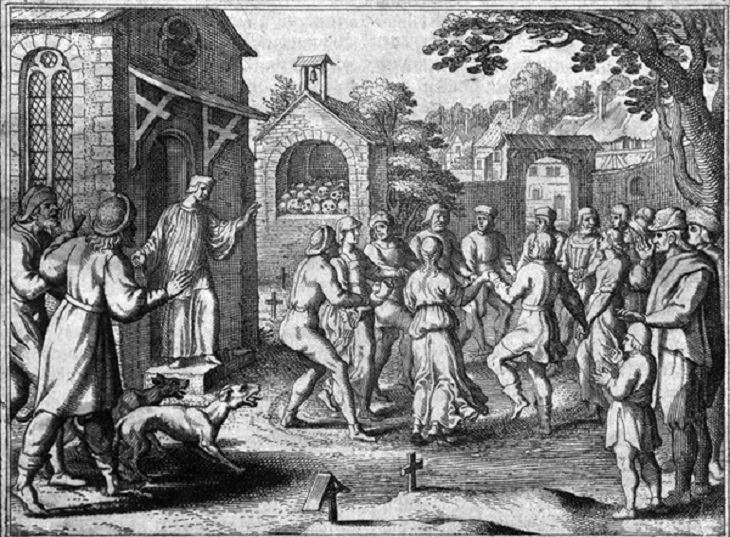Edgar Allen Poe was a famous American writer who died at age 40 in 1849 under mysterious circumstances. A few days before his death, Poe was spotted lying in a gutter near a tavern in Baltimore, Maryland, delirious and dressed in shabby second-hand clothes. Poe was taken to a hospital where he wasn’t able to explain what happened to him as he lapsed in and out of consciousness for the next few days. He passed away on the morning of October 7, 1849.
J.E. Snodgrass, a doctor and one of Poe’s friends, visited him in the hospital but couldn’t recognize the author. He said that Poe likely died from complications of alcoholism. Other theories suggest that his blood sugar was too low, and some say he was under the influence of drugs. Curiously, however, there are no records about the cause of Poe’s death.
Some people even believed that the author might have been a victim of a crime. Unfortunately, no one investigated the mystery of Edgar Allen Poe's death, and it’s unlikely that we ever get a definitive answer to what exactly brought about the sudden end of the master of mystery.
2. Where Did The Roanoke Colony Go?
The Lost Colony - design by William Ludwell Sheppard, engraving by William James Linton. (Image source:
Wikimedia Commons)
The island of Roanoke, situated off the coast of present-day North Carolina, U.S., was established in 1585 by a group of colonists from England led by John White. White, who became the new settlement’s governor, left for England two years later to get more supplies, leaving behind his wife, daughter, son-in-law, and granddaughter. White’s granddaughter, Virginia Dare, is believed to be the first English child born in the Americas.
When White returned to the island in 1590, he was shocked to find that the entire colony had vanished. All he found was a single word carved on a tree - “CROATOAN.” Ethnologists and anthropologists believe that the word might be an amalgamation of two Algonquian words meaning "talk town" or "council town."
In the centuries since, several theories have tried to explain the vanishing of the Roanoke colony. The most popular one suggests that the people of the settlement moved to a nearby island. Others say that they had fled. But no one knows for sure what happened to the colony, and perhaps, no one ever will.
3. The Real Identity Of Jack The Ripper
One of a series of images from the Illustrated London News for October 13, 1888, entitled "A Suspicious Character". (Image source:
Wikimedia Commons)
Who was Jack the Ripper? This question has been asked countless times for more than a century, but we still don’t know the true identity of this Victorian serial killer.
In 1888, at least five women were brutally murdered in the East End of London, England. Anonymous letters were then sent to the police, confessing to the crimes, and signed “Jack the Ripper.” Whether any of them were written by the actual murderer remains a matter of debate, but Jack the Ripper went on to become one of the most anonymous and threatening serial killers of history.
The real killer was never found, and most of the police files relating to the investigation were destroyed during World War II. It’s almost certain now that the real identity of the Ripper will never be known.
4. Where is the Ark of the Covenant?
Joshua passing through the River Jordan with the Ark of the Covenant. (Image source:
Wikimedia Commons)
The Ark of The Covenant was a chest made of pure gold containing the tablets with the Ten Commandments. It was believed to be kept in the First Temple - a building used by the Jewish people to worship God – in Jerusalem. The Ark is mentioned several times in the Bible, and the Book of Exodus says that God had instructed Moses to build it during his stay on Mount Sinai.
In 587 B.C., a Babylonian army under King Nebuchadnezzar II attacked Jerusalem and destroyed the temple. The fate of the Ark is unclear. Some sources suggest that it might have been carried back to Babylon or hidden before Jerusalem was attacked. Interestingly, the Church of Our Lady Mary of Zion claims that the Ark remains in their possession. Unfortunately, no one knows what happened to it for sure.
5. Einstein’s Last Words
Albert Einstein during a lecture in Vienna in 1921. (Image source:
Wikimedia Commons)
The genius German physicist Albert Einstein, famous for devising his theory of relativity, passed away on the 18th of April, 1955. The cause of his death was the rupture of an abdominal aortic aneurysm.
Einstein had refused treatment, saying “I want to go when I want. It is tasteless to prolong life artificially. I have done my share, it is time to go. I will do it elegantly.”
However, the great man’s very last words will forever remain unknown because they were said in his native German to a nurse who didn’t understand the language. The nurse said that she heard Einstein muttering something moments before he breathed his last but didn’t know exactly what he said. Perhaps, it was a profound sentence, or maybe he was uttering his final farewell to the world. We will never know, sadly.
6. The Indus Valley Script
Steatite seal from the Harappan civilization, with inscription in Indus script. (Image source:
Wikimedia Commons)
The Indus script (also known as the Harappan script) is the writing script developed by the Indus Valley Civilization - one of the earliest urban civilizations in human history. The civilization is believed to have flourished from about 2600 BC to 1900 BC. However, their writing system remains undeciphered. Linguists can’t agree on the kind of language used in the script. So far, it doesn't seem to have any connections with other languages used in the surrounding areas as well as India and Pakistan. About 400 signs have been identified in the script, making researchers believe that a large part of it was written on perishable materials such as palm leaves or birch.
But we still know nothing conclusive about the script, and this is the reason that the Indus Valley Civilization remains one of the most mysterious ancient civilizations.
7. Dancing Plague of 1518
Citizens of 1518 Strasbourg with the 'dancing plague' dancing amid graves in a churchyard. (Image source:
Wikimedia Commons)
On July 14, 1518, a woman named Frau Troffea stepped out of her home in the French town of Strasbourg (then part of the Holy Roman Empire) and suddenly began dancing. A large crowd soon gathered around her, curious to see what was happening. The woman seemed unable to stop and didn’t have control over her actions. She kept dancing until she collapsed from exhaustion but soon resumed the frenzied activity. This went on for a few days, and, surprisingly, more than 30 other people began dancing similarly across the city within a week. By the end of the month, almost 400 people were dancing in the city streets and kept going even as their feet bled. A number of them died from their exertions, and no one in the city knew how to stop them. The dancing frenzy began to abate only in early September.
The civic and religious leaders declared that the people had been suffering from the ‘dancing mania’ or ‘dancing plague.’ As strange as this may appear to us today, this dancing mania was not a unique occurrence. Chronicles from the 14th to 16th centuries are full of reports claiming several similar outbreaks in Europe. One similar dancing outbreak in 1374 spread to several towns along the Rhine River.
But what was the reason behind the dancing plague? Scientists are still puzzled by this mystery half a millennium later. Initially, it was believed that the people were dancing to attract divine favor. In the 20th century, investigators said that the people of the town might have consumed bread contaminated with the fungal disease ergot, which can lead to convulsions. The most popular theory is that the town was affected by a mass psychogenic disorder. However, no conclusive evidence of the bizarre incident has been found.
Share this post with other history buffs...

